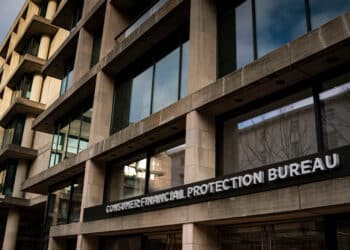Do Recent Subpoenas Spell Caution for Subprime?

The subpoena for GMF was issued July 28. SCUSA made public its subpoena on Aug. 7.
The US Attorney’s Office for the Southern District of New York is relying on a 1989 law called the Financial Institutions Reform, Recovery and Enforcement Act, or FIRREA, for its investigation of GMF. DOJ confirmed to Auto Finance News that the New York office was leading the GMF investigation. Later, a DOJ spokeswoman would neither confirm nor deny that it had also issued the SCUSA subpoena.
Regardless, FIRREA is the same law that led to billions of dollars in fines for financial firms over questionable mortgages pooled into securities in the run-up to the financial crisis.
“DOJ may have its sights focused on subprime auto markets as it relates to representations on the quality of the loans in the securitization markets,” Kenneth Rojc, a managing partner in the automotive finance group at Nisen & Elliott LLC, told Auto Finance News.
The subpoenas come on the heels of high-profilenegative publicity surrounding subprime auto lenders and dealers. But the DOJ appears to be equally motivated by concerns that investors buying into subprime ABS pools may not fully understand the risk inherent in some of the packages sold to the market over the past seven years.
American Financial Services Association President and Chief Executive Chris Steinebert was especially critical of a recent New York Times article criticizing subprime lending, saying the numbers tell a different story.
In a letter to the editor published July 25 in The Times, Steinebert wrote that there is no bubble forming in the subprime space. The auto market, like other sectors, is cyclical. He pointed to data from Experian Automotive that showed that in the first quarter, the share of used subprime loans was lower than it had been in the first quarters of 2013 and 2012, but slightly higher than in the first quarters of 2011, 2010 and 2009. The Standard & Poor’s/Experian Consumer Credit Default Index showed that the auto loan default rate hit a historic low in April 2014, at 0.92%.
Steinebert told AFN that there are important characteristics to remember with auto that make it different from other asset-class financing. Importantly, most poeple need a car for transportation. And he pointed out that subprime lending is nothing new in the auto finance space.
“Historically, if you go back over the last 10 years or so, subprime always represented around a quarter of the loans,” he said.
TREADING CAREFULLY
In addition, Steinebert said the loans have always been priced as a depreciating asset, unlike mortgages, where people assumed they would refinance before the asset’s value resets. “I think the important thing is to look at the statistics, see what the ratios are on loan-to-value today, whether there’s been any dramatic increases,” he said.
Subprime auto lenders maintained a cautious stance on lending in the first quarter, according to a July 14 report from Moody’s, which says that this action “bodes well for new subprime auto loan-backed securities (ABS) in the US.”
Peter McNally, assistant vice president at Moody’s, said, “We analyzed a number of credit metrics from Experian that suggest that subprime lenders are becoming more cautious and making fewer loans to riskier borrowers. If this trend holds, losses on new subprime auto ABS are likely to stabilize.”
McNally said that data shows that the credit scores of borrowers taking out used-car loans rose for the second straight quarter and that subprime lenders raised their interest rates. These two trends suggest that lenders are exercising more caution, following deterioration in subprime loan performance in 2013.
The markets saw $17.6 billion of asset-backed securities tied to subprime auto loans issued last year. That’s more than double the $8 billion sold in 2010, according to Barclays PLC. This year, ratings agency Standard & Poor’s is projecting that ABS volume will reach $20 billion for subprime, and another $5 billion for what it calls nonprime. In its June Subprime Auto Loan ABS Tracker report, S&P said performance continues to weaken as subprime lending approaches pre-crisis levels, competition increases, and trends such as higher LTV ratios and longer loan terms remain prevalent.
“Over the last year, industry loan delinquencies and net losses have increased while the quality of car collateral has declined,” said Boston University Professor Mark T. Williams, a risk management expert. “Increasingly, subprime auto lending has become very competitive, motivating lenders to reduce credit standards in an attempt to gain customers.”
Williams told AFN that the Federal Reserve’s low interest rates, in place since the recession, have forced traditional investors to seek higher returns, which by nature, means higher risk. But he says what led to the decline in credit underwriting standards and increased competitive pressure is similar to the circumstances that led to the mortgage crisis.
“If the industry isn’t collectively going to put a stop to it, and say, we have to elevate standards to protect ourselves and our investors, that’s where industry regulators and independent ratings agencies need to come in,” said Williams.
S&P reported in August that year-to-date loan-to-value ratios grew to 116 from 114 last year. Midyear weighted average Fico scores slipped to 572 from 577 from last year. The S&P ABS tracker indicated that recoveries in the first quarter had slightly softened to 48.7% from 53.5% in 2013.
S&P also expected a decline in recovery rates, given the high used-vehicle prices over the past few years. Prices, it says, will likely trend lower over the next year as used vehicle values face downward price pressures.
John Bella, managing director of Fitch Ratings, said that predicted defaults and recoveries are built into subprime ABS deals, protecting them, to some degree, from loss. Strong used-car values play a key role in the performance of auto loan ABS, because when values are high, both net losses and the severity of those losses typically decline in ABS transactions.
Federal Reserve data shows that the overall debt-service ratio for consumers in the first quarter was 9.9%, and about half that was for mortgages. “In isolation, regardless if it’s in subprime mortgage or auto, in this case, auto, and delinquencies are increasing, losses are increasing, collateral quality is declining,” said Williams. “Those are all indications that credit underwriting standards are declining. That’s fact.”
AFSA’s Steinebert and others believe the industry is still operating smoothly for now. “There’s a lot of competition, but we’re not seeing stupid things happening,” he said.
Instead, auto finance has been one of the few industries that has performed relatively well in recent years, hence the attractiveness to hedge funds and private equity firms. “I don’t think the industry got stupid all of a sudden and forgot its discipline that it remembered during the whole heady times earlier this decade,” Steinebert said.














